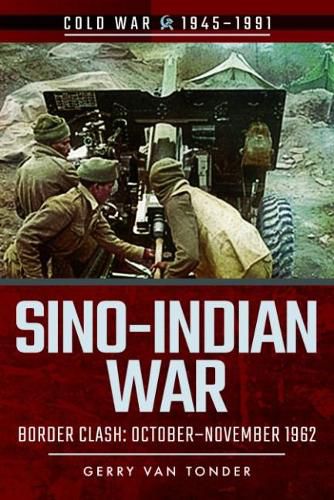Readings Newsletter
Become a Readings Member to make your shopping experience even easier.
Sign in or sign up for free!
You’re not far away from qualifying for FREE standard shipping within Australia
You’ve qualified for FREE standard shipping within Australia
The cart is loading…






For a hundred years, British and Chinese territorial claims in the Himalayas conflicted, with Indian historians claiming that the region was the fountainhead of Hindu civilization. In the halcyon days of the Raj, London saw Afghanistan and Tibet as buffers against Russian and Chinese imperialism. In 1913, an ephemeral agreement between Britain, Tibet and China was signed, recognising the McMahon Line as the border of the disputed territory. China, however, failed to ratify the agreement, while India protested against a loss of historical land. After the Second World War, India became independent of Britain and Chinese Communists proclaimed a peopless republic. Despite cordial overtures from Indian Prime Minister Nehru, in late 1950 the Chinese Peopless Liberation Army (PLA) invaded Tibet. In the ensuing twelve years, Indian diplomacy and Chinese ‘cartographic aggression’ were punctuated by border incidents, particularly in 1953 when armed clashes precipitated a significant increase in the disposition of troops by both sides. In the spring of 1962, Indian forces flooded into the Ladakh region of the state of Jammu and Kashmir, to check the Chinese. In a spiralling game of brinkmanship, in September, ground forces were strategically deployed and redeployed. On 10 October, thirty-three Chinese died in a firefight near Dhola. Embittered by Moscow’s support of India against a sister communist state, and in a bid to clip Nehru’s belligerent wings, on 20 October, the PLA launched a two-pronged attack against Indian positions. AUTHOR: Gerry van Tonder was born in Bulawayo, Southern Rhodesia (now Zimbabwe) in 1955. He joined the Ministry of Internal Affairs (Intaf) in January 1975, stationed at Karoi. He was then posted to Mt Darwin as District Officer. He was the Returning Officer for Rushinga during the Zimbabwean elections, liaising with election supervisors and returned guerrillas, and came to Britain in 1999. He has written extensively on Rhodesian history and local British history and has recently started a series of Cold War titles. He lives in the UK. 20 colour and 60 b/w illustrations
$9.00 standard shipping within Australia
FREE standard shipping within Australia for orders over $100.00
Express & International shipping calculated at checkout
For a hundred years, British and Chinese territorial claims in the Himalayas conflicted, with Indian historians claiming that the region was the fountainhead of Hindu civilization. In the halcyon days of the Raj, London saw Afghanistan and Tibet as buffers against Russian and Chinese imperialism. In 1913, an ephemeral agreement between Britain, Tibet and China was signed, recognising the McMahon Line as the border of the disputed territory. China, however, failed to ratify the agreement, while India protested against a loss of historical land. After the Second World War, India became independent of Britain and Chinese Communists proclaimed a peopless republic. Despite cordial overtures from Indian Prime Minister Nehru, in late 1950 the Chinese Peopless Liberation Army (PLA) invaded Tibet. In the ensuing twelve years, Indian diplomacy and Chinese ‘cartographic aggression’ were punctuated by border incidents, particularly in 1953 when armed clashes precipitated a significant increase in the disposition of troops by both sides. In the spring of 1962, Indian forces flooded into the Ladakh region of the state of Jammu and Kashmir, to check the Chinese. In a spiralling game of brinkmanship, in September, ground forces were strategically deployed and redeployed. On 10 October, thirty-three Chinese died in a firefight near Dhola. Embittered by Moscow’s support of India against a sister communist state, and in a bid to clip Nehru’s belligerent wings, on 20 October, the PLA launched a two-pronged attack against Indian positions. AUTHOR: Gerry van Tonder was born in Bulawayo, Southern Rhodesia (now Zimbabwe) in 1955. He joined the Ministry of Internal Affairs (Intaf) in January 1975, stationed at Karoi. He was then posted to Mt Darwin as District Officer. He was the Returning Officer for Rushinga during the Zimbabwean elections, liaising with election supervisors and returned guerrillas, and came to Britain in 1999. He has written extensively on Rhodesian history and local British history and has recently started a series of Cold War titles. He lives in the UK. 20 colour and 60 b/w illustrations